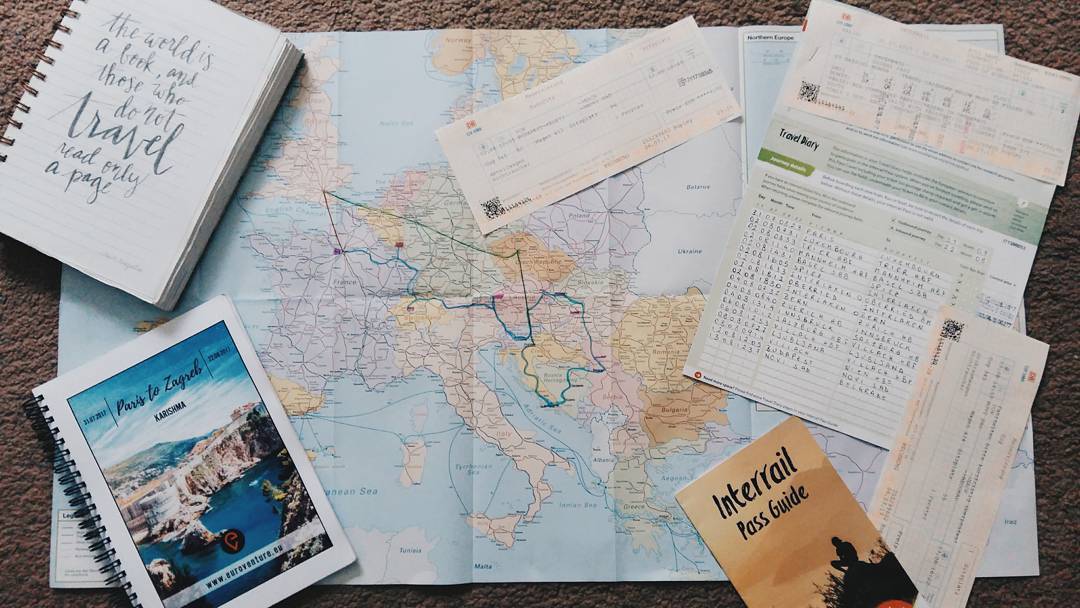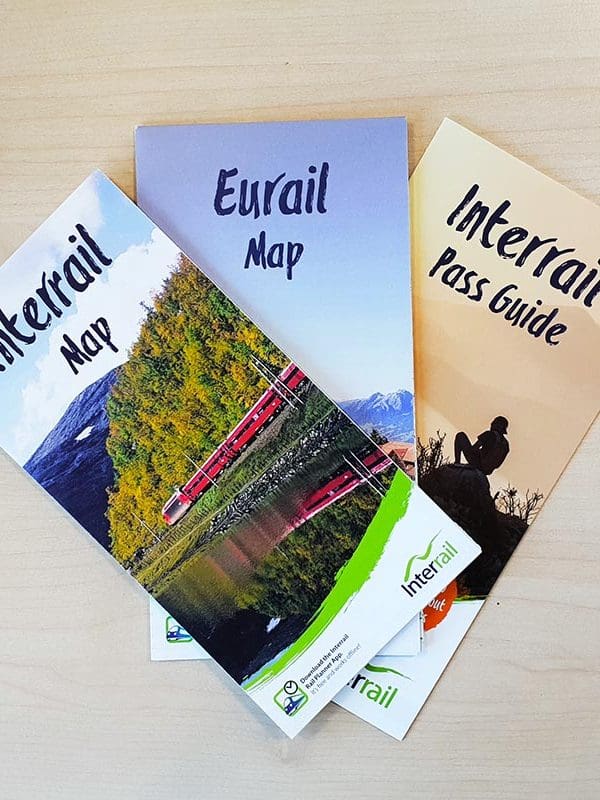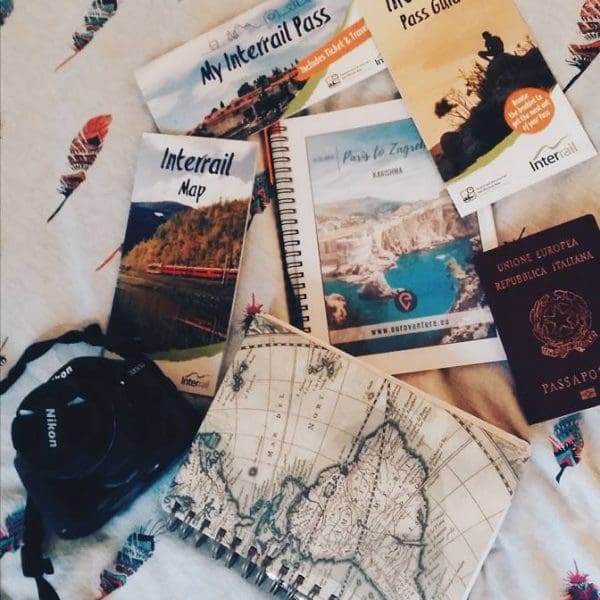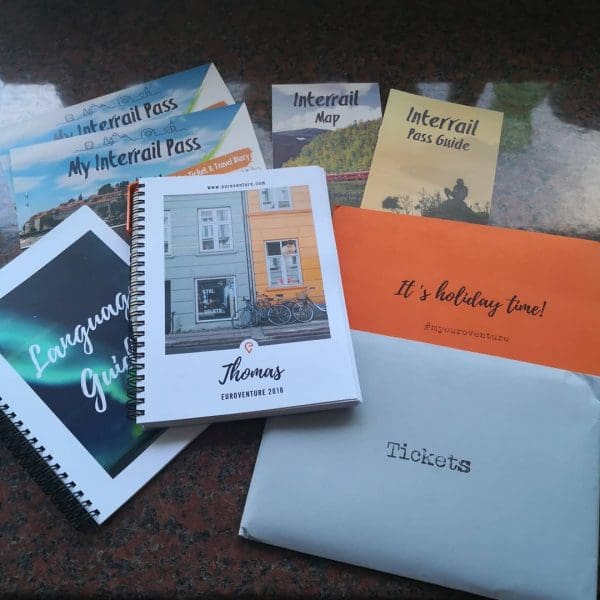Instead of fretting over which pass you need, just sit back and relax! We’ll take care of choosing the right pass for you, whether that’s choosing between:
Interrail passes (for European citizens and official residents) and Eurail passes (for non-European citizens)
A 5 in 1-month pass (travelling on any 5 days within a 1 month period), a 7 in 1-month pass (travelling on any 7 days within a 1 month period), a 10 in 2-months pass or a 15 in 2-months pass. You can also get passes for consecutive days, but unless you want to travel relentlessly every single day they’re usually not worth it!
A Youth Pass (18-27 year olds) and an Adult pass (28+).
If you are under 18 you can still use a Youth pass (from the age of 12) but because of rules about minimum ages in hostels, we need to speak to you first if you’re under 18 and want to book.
We purchase your pass so you don’t have to, so please make sure that you provide us with correct personal details, as these will be printed on the pass!
This includes your first and surname, date of birth and passport or ID card number, and you’ll need to use the same details that appear on your passport.
Once you’ve received your pass, it might also be a good idea to double-check these details in good time, so that we can enter the correct details before you head off.

When using night trains you simply enter the travel date as the day of departure.
So, for example, if you were travelling from Budapest to Venice, this involves a change in Vienna with the night train leaving Vienna at 21:45 and arriving in Venice at 08:12 the next day. Your journey from Budapest to Vienna would be on the same travel day as your night train leaves Vienna, so you only need to use one travel day!
If you were doing this route in the opposite direction, you’d have to use 2 travel days as you’d get the night train from Venice to Vienna on day 1, and then you’d then get your connecting train to Budapest on day 2, so you’d have to enter both of these as travel days.
Learn more about the details of travelling Europe by rail here.
Some European train journeys require a reservation, i.e. a guaranteed seat for one specific train. We will arrange all of this for you, and will include your travel time, coach and seat number in your travel timetable.
For train journeys that don’t require a reservation, such as Vienna to Budapest, we will also provide you with a list of times so you can choose to travel whenever you like!
Remember to bring your passport or ID card with you on all journeys. You may be asked to present this to the inspector alongside your pass. It’s always a good idea to make sure you have these to hand as well, or at least know exactly where you’ve put them. That’s because you’ll often find yourself travelling across borders, and the new country’s ticket inspector may check again.
For more information on seat reservations, check out our ultimate guide to Interrail reservations!

Until recently, Interrail passes were not valid for use in your own country – at all. However, with the new rules there is a concession which is great to know about.
You are allowed one outbound and one inbound journey in your own country at the start and end of your trip, using a travel day as normal.
This means you can travel to and from St Pancras (for the Eurostar) free of charge, as long as you’re travelling on the same day as your departure and arrival from/into the country.
Remember that if you’re not leaving your home country on the same day you can’t use this rule, so if you were travelling from Leeds down to London and then heading on to Paris that day, you can use your pass and travel for free. However, if you travel down from Leeds the day before and stay overnight in London, you can’t use your pass for this journey and will need to purchase a normal ticket.
Most people choose a ‘Global Pass’ which allows you to travel to any country in Europe that Interrail operates in (this is most but not all countries in Europe) namely: Austria, Belgium, Bosnia-Herzegovina, Bulgaria, Croatia, Czechia, Denmark, Finland, France, Germany, Greece, Hungary, Ireland, Italy, Luxembourg, Liechtenstein, Macedonia, Monaco, Montenegro, Netherlands, Norway, Poland, Portugal, Romania, Serbia, Slovakia, Slovenia, Spain, Switzerland, Sweden, Turkey and United Kingdom.
Alternatively, you can choose a one-country pass for most of the countries above. For more information on the different types of passes and tickets available, head to our ultimate guide to travelling Europe by rail.

Along with your personalised travel pack with accommodation and train timetables, we’ll send you your pass, as well as an Interrail map and guide. If in doubt as to how to use your pass, this guide should answer any questions you might have, but if not, we are always on hand to help!
Your pass will show the first and last date that you can use it on, but we will also include a more detailed Interrail Pass page in your travel pack. This will tell you exactly which dates and journeys to write in the travel report attached to your pass – please take care in entering these, as you may be fined for any errors. If you do happen to make a mistake on your pass and want to correct it, you will have to enter the correct details into the next travel day box. This also means that you’ll lose a travel day!
You will need to fill each journey in on your pass calendar before you board for your pass to be valid. The beauty of interrailing is that you have complete flexibility, so just in case you decide to change your plans for journeys without reservations, try to only fill your journeys in individually, just before making them – your Euroventure pen will come in handy for this!
In the same way, for journeys without reservations, you may want to wait until you are about to travel before filling in the time of the train that you want to catch, just in case you change your mind or miss a train.


Luckily when you travel with us, you don’t ever need to worry about which pass to use!
Our specialist software does all the work for you, by checking which is the best possible way for you to travel Europe. We compare all the different passes against full fare tickets and various combinations of the two, and find the most economical option for you. This is then incorporated into our pricing, so that you only pay for the tickets you’re going to use – saving you money and time!
When you receive your pack you will also receive all the tickets and passes that you require. A detailed guide will be included, to explain which tickets you need to use when.
We’ll also include a pass guide which gives you detailed instructions on how to use your Interrail Pass if you’ve got one.
Generally, your pack will include several different kinds of tickets. We double check all the packs so it’s very unlikely that you’re missing anything, but if you’re unsure don’t hesitate to ask!
Your pack will contain:
1. Interrail Pass: This will be whichever duration of pass is best suited to your trip. It will be in a pocket complete with interrail guide & map.
2. Seat reservations for use with pass: For SOME journeys, you will require a reservation. Any reservations required will be included along with your pass. These will be either in A4 printed PDF format, or printed on a pink/orange DB ticket slip.
3. Full Fare tickets: You’ll need to use these for journeys not covered by your Interrail Pass. These will be either in printed PDF format, or printed on a pink/orange DB ticket slip.
4. Coach/Ferry tickets: Any ferries or coaches you’re taking will also be included in your pack – these are generally in A4 printed PDF ticket format.
All your transport times are listed in your travel pack and are colour coded so that you know exactly when to use your pass, and when not to!

Interested in travelling with us? If you want to travel Europe but don’t know where to start, why not check out our Ultimate guide to travelling Europe to get you started – or find out where in Europe you should travel with our destination guide.